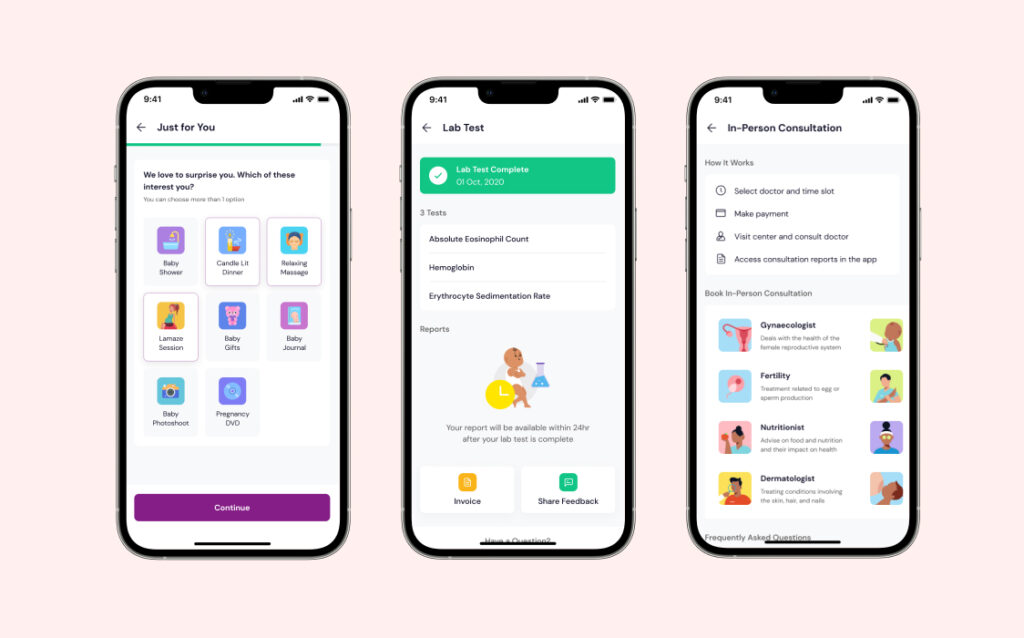Unlocking Business Growth and Innovation: The Power of Inclusive Design in the Digital Era

Introduction
Inclusivity in product design cannot be overstated in today’s evolving digital landscape. With the digital realm becoming increasingly integrated into our daily lives, the need for digital products that cater to a diverse and inclusive audience is more critical than ever. This article delves into the significance of inclusivity in digital product design and its role in driving business growth and innovation.
The Concept of Inclusivity in Digital Product Design
Inclusivity in digital product design refers to the practice of creating digital solutions that are accessible and relevant to a wide and diverse range of users. It goes beyond designing for a particular user group and involves considering the needs and preferences of individuals with different abilities, backgrounds, and identities. Inclusive digital products are designed to be usable, engaging, and beneficial to as many people as possible.
Inclusivity is crucial for digital businesses for several compelling reasons. It not only expands the potential user base but also enhances user satisfaction, fostering customer loyalty. Inclusive design in the digital world can lead to improved brand reputation, setting companies apart as champions of diversity and accessibility.
Benefits of Incorporating Inclusivity in Digital Product Design
-
Expanded Target Market
Inclusivity in digital product design broadens the target market by making digital solutions accessible to a diverse audience. Digital products that cater to a range of abilities, backgrounds, and preferences attract a wider customer base. For instance, a mobile app designed with intuitive user interfaces and clear navigation benefits users of all abilities and increases its user base.
Digital platforms like Zoom and Microsoft Teams, which offer robust built-in accessibility features, have become essential tools for remote communication. These platforms are now used by diverse audiences, including those with disabilities, reinforcing the notion that inclusivity in digital product design expands the user base and drives success.
-
Enhanced User Satisfaction and Loyalty
Inclusivity in digital product design leads to better user experiences. When digital products are designed to accommodate diverse user needs, they become more user-friendly and engaging, ultimately boosting user satisfaction. For example, the introduction of real-time captioning and transcription services in video conferencing applications has not only made them more accessible but also improved the user experience for all users.
Apple is an exemplary case study that introduced SignTime, a service that helps people communicate with AppleCare and Retail Customer Care in their web browsers using sign language1. This service has been launched in multiple countries and has made a difference in how the team connects with each other and with customers.
-
Improved Brand Reputation in the Digital Sphere
Inclusivity positively influences public perception of a digital brand. When a company is recognized for its inclusive digital products, it is seen as forward-thinking, empathetic, and ethical. Social media platforms like Twitter and Facebook have made strides in improving the accessibility of their interfaces. This has not only boosted their brand reputation but also reinforced the importance of inclusive digital design.
Strategies for Achieving Inclusivity in Digital Product Design
Conducting Thorough Market Research
- Importance of Understanding Diverse User Needs and Preferences
To achieve inclusivity in digital product design, businesses must conduct comprehensive market research. This research should encompass a wide range of user demographics, considering varying abilities, backgrounds, and preferences. Understanding the specific needs and preferences of diverse user groups is essential to creating digital products that resonate with them.
- Methods for Gathering Data and Insights on Inclusivity in Digital Product Design
Methods for gathering data on inclusivity in digital product design can include user surveys, focus groups, usability testing, and consulting with experts in accessibility and diversity. User feedback and real-world insights should be integral to the development process, ensuring that digital products align with the needs of a diverse audience.
Inclusive Design Principles in the Digital Space
Inclusive design principles are guidelines that promote the creation of digital products that are accessible and usable by a broad audience. These principles emphasize flexibility, simplicity, and empathy in the design process. Inclusive design principles in the digital space include flexible design solutions, intuitive navigation, and providing multiple means of interaction and engagement. For example, a flexible digital design can offer adjustable font sizes and contrast settings to accommodate users with visual impairments. Simplicity can be achieved through clear, intuitive user interfaces. Providing multiple means of interaction may involve offering voice commands, keyboard shortcuts, and touch gestures, ensuring accessibility for users with diverse abilities.
Collaboration with Diverse Stakeholders
- Importance of Involving Diverse Perspectives in the Digital Product Design Process
To ensure inclusivity in digital product design, it is vital to collaborate with a diverse range of stakeholders. These stakeholders may include individuals from various backgrounds, including those with different abilities, genders, ages, and cultural perspectives. Engaging these diverse voices in the digital product design process helps identify potential biases, uncover hidden assumptions, and ensure that the final digital product is accessible and relevant to a wide audience.
- Ways to Engage with Diverse Stakeholders and Incorporate Their Insights
Ways to engage with diverse stakeholders in the digital product design process may include forming advisory boards, conducting usability testing with representative users, and seeking feedback from relevant advocacy groups and organizations. Incorporating diverse perspectives fosters a more comprehensive and inclusive approach to digital product design.
Case Studies of Successful Inclusivity in Digital Product Design
Cloudnine – Pioneering Inclusivity in Healthcare
Cloudnine, a prominent healthcare provider in India, specializes in offering world-class maternity and fertility services. Their steadfast commitment to inclusivity extends to the design of their app, a prime example of how businesses can leverage inclusivity for success.
The Cloudnine app exemplifies a deep understanding of the diverse needs of its users. Recognizing that their user base is a rich tapestry of backgrounds, abilities, and needs, the team at Cloudnine approached the app’s design with inclusivity as a core principle.
Key to the app’s success is its simple and intuitive user interface. Cloudnine’s app boasts an easy-to-navigate design with clear labels and instructions, making it accessible to users of all tech backgrounds. It includes features such as appointment booking, virtual consultations, and access to medical records, ensuring that healthcare services are within reach for a wide array of users.
The inclusive design of the Cloudnine app transcends accessibility; it has become a catalyst for business growth. By broadening their services’ accessibility, Cloudnine expanded its user base significantly. The app has received accolades from users, translating into heightened customer satisfaction and unwavering loyalty.
Microsoft’s Inclusive Design Initiatives
Microsoft has demonstrated a remarkable commitment to inclusive digital product design. Their suite of accessibility features across Windows, Office 365, and other digital products, such as inclusive classroom tools and adaptive controller support for gaming, showcases their dedication to inclusivity. This inclusive approach has not only improved the digital product experience for diverse users but has also bolstered Microsoft’s reputation and customer loyalty.
Google’s Efforts in Inclusive App Design
Google has been at the forefront of inclusive app design. Google’s commitment to inclusivity in digital product design has enhanced its brand reputation and encouraged the development of more inclusive digital apps. According to research from the Centre for Inclusive Design, products and services designed with inclusivity in mind can reach four times the number of intended consumers. This suggests that Google’s inclusive design initiatives could significantly expand its user base.
Conclusion
In today’s competitive digital landscape, the ability to attract and retain a diverse user base is a key differentiator. The benefits of inclusivity in digital product design go beyond social responsibility; they extend to the bottom line. As businesses prioritize inclusivity, they are met with tangible results that translate into increased customer engagement, positive brand perception, and ultimately, business growth.
However, inclusivity in digital product design is not achieved overnight; it requires a concerted effort and a commitment to change. Here are some key takeaways for businesses looking to embark on their journey towards inclusivity in the digital world:
- Empathy and Research: Understand your audience by conducting thorough market research. Recognize the diversity within your user base and ensure your products cater to a wide range of needs and preferences.
- Inclusive Design Principles: Embrace inclusive design principles that prioritize flexibility, simplicity, and empathy. Ensure that your digital products offer multiple means of interaction and engagement to accommodate diverse user abilities.
- Stakeholder Collaboration: Engage with a diverse group of stakeholders, including those with different abilities, backgrounds, and perspectives. Their insights and feedback are invaluable in crafting inclusive digital solutions.
- Continuous Improvement: Inclusivity is an ongoing process. Continuously gather feedback and data to refine your digital products and make them more accessible and user-friendly.
- Inclusive Development Teams: Foster a culture of inclusivity within your organization. Ensure that your development teams are diverse and that they understand the importance of inclusive design.
By following these principles and taking practical steps, businesses can reap the benefits of inclusivity in the digital realm. They can position themselves as leaders in creating digital solutions that cater to a diverse and expanding user base.
To summarise, inclusivity in digital product design is not just a moral imperative; it is a business imperative. By embracing inclusivity, companies can expand their market, enhance user satisfaction and loyalty, and cultivate a positive brand reputation. In a rapidly changing digital landscape, inclusive design is the key to business growth and innovation, ensuring that no one is left behind in the digital revolution. It’s time for businesses to recognize the potential of inclusivity and make it an integral part of their digital strategy.






